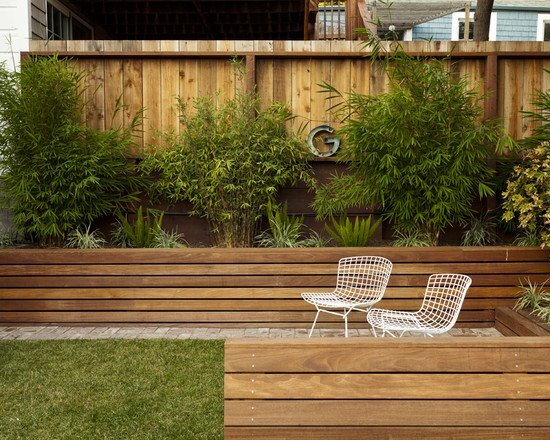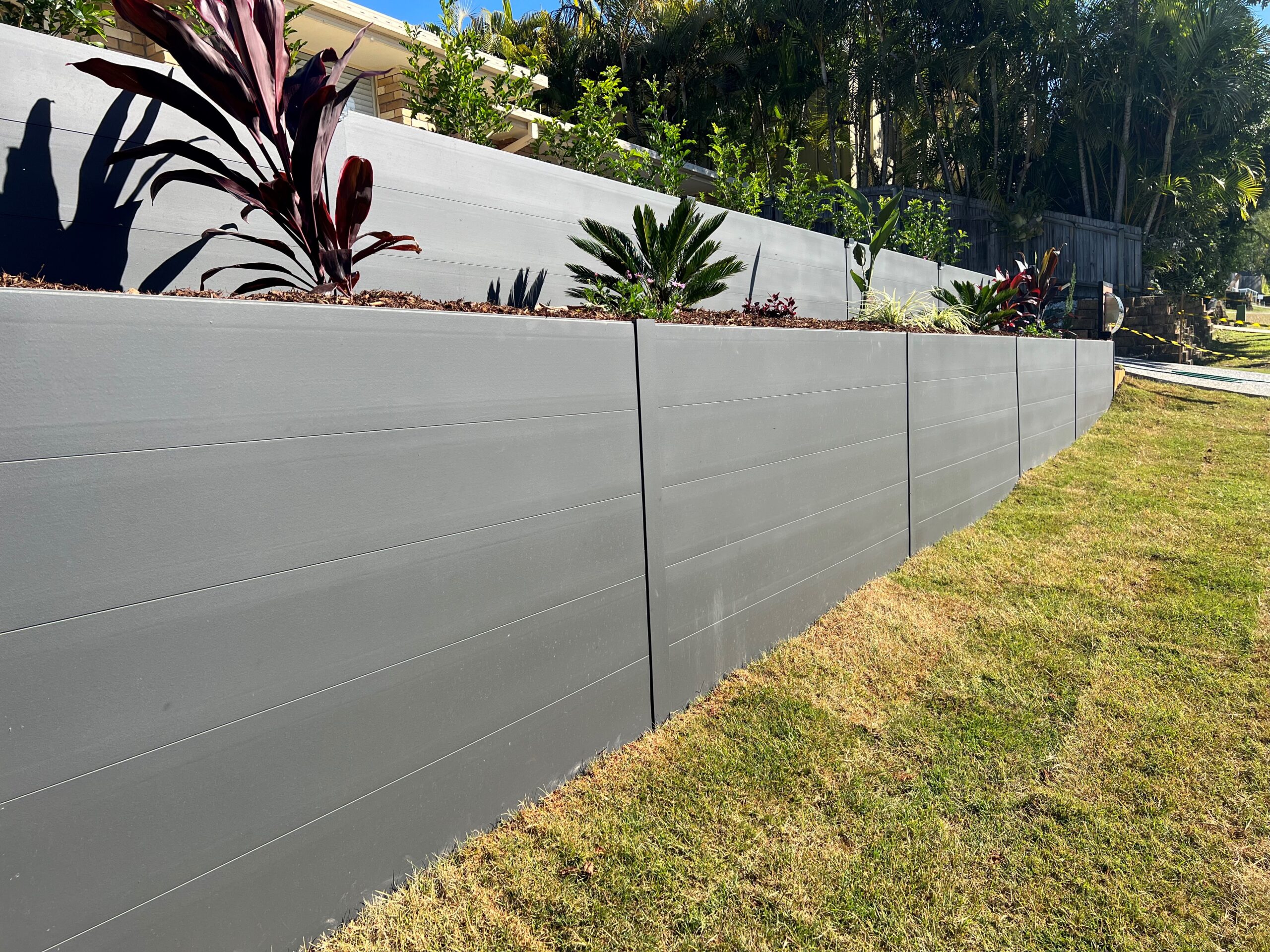Economical and Premium Retaining Walls Sunshine Coast: What to Know
Economical and Premium Retaining Walls Sunshine Coast: What to Know
Blog Article
Making Sure Architectural Honesty: The Significance of Properly Built Preserving Walls in Protecting Against Slope Failing
In the realm of civil engineering and building, the relevance of properly constructed retaining walls in preventing slope failure can not be understated. By discovering the intricate interaction in between these components, a much deeper understanding of the pivotal role that retaining wall surfaces play in maintaining architectural honesty and stopping incline failure arises.
Function of Retaining Walls in Security
The necessity of maintaining walls in ensuring incline security is vital in civil design techniques. Retaining walls offer an essential role in protecting against soil disintegration, handling water drainage, and keeping the structural honesty of inclines. By sustaining near-vertical or upright grade modifications, keeping wall surfaces help to redistribute side pressure applied by the soil, thus reducing the risk of slope failure.
One secret function of preserving walls is to neutralize the pressure of gravity acting upon the soil mass behind them. This is attained via proper design and building and construction, which considers aspects such as dirt type, wall surface elevation, drainage stipulations, and potential surcharge lots. By efficiently maintaining soil within specified boundaries, these structures assist to maintain inclines and prevent landslides.
Furthermore, preserving walls contribute to the appearances of landscapes while providing useful benefits. They can create terraced degrees for landscaping, assistance highways or structures on hillsides, and improve the general usability of sloped surface. Essentially, retaining walls play a crucial duty in keeping incline security and guaranteeing the safety and security and durability of civil design jobs.
Variables Influencing Wall Efficiency
Elements that influence the effectiveness of keeping walls include dirt residential or commercial properties, wall surface style, and exterior loads. Soil properties play an essential role in determining the security and efficiency of a retaining wall surface. Factors such as soil type, cohesion, inner rubbing angle, and groundwater problems can influence exactly how well a wall preserves the soil behind it. The style of the retaining wall is another vital factor that affects its efficiency. Correct wall style takes into consideration aspects like wall surface height, wall type (e.g., gravity wall surfaces, cantilever walls), support materials, drainage systems, and construction methods to make sure the wall surface can endure the side stress put in by the maintained soil. In addition, external tons, such as surcharge loads from nearby frameworks or traffic, seismic forces, and water stress, need to be thoroughly examined throughout the style and construction phases to guarantee the wall can properly stand up to these outside pressures. By taking into consideration these aspects comprehensively, designers can construct preserving walls that efficiently protect against slope failing and make sure long-lasting structural stability.
Layout Considerations for Maintaining Walls
Incorporating the important elements of soil properties and outside loads into the architectural design process is essential for establishing effective maintaining wall surfaces that guarantee incline security. When designing preserving walls, engineers should meticulously review the attributes of the surrounding soil, including its kind, compaction, and drain residential or commercial properties. Comprehending these soil buildings is critical for figuring out the appropriate wall surface reinforcement, density, and elevation required to hold up against the side stress exerted by the soil mass.
Moreover, outside lots such as surcharge loads from neighboring structures or traffic, as well read this as seismic forces, should be considered during the layout stage. These lots can substantially influence the stability and efficiency of a retaining wall surface, demanding the usage of correct style strategies and materials to minimize possible failing threats.
Additionally, the selection of suitable materials, such as concrete, stone, or hardwood, should straighten with the site-specific problems and aesthetic needs. Variable of security considerations, water drainage stipulations, and building and construction methods are likewise crucial aspects that affect the overall design and performance of keeping walls in stopping slope failure. By thoroughly considering these style factors to consider, designers can ensure the architectural stability and long-term security of preserving walls.

Construction Best Practices for Durability
When creating maintaining walls for ideal resilience and longevity, adherence to industry-standard techniques and thorough focus to detail are vital. To make certain the longevity of a keeping wall surface, proper site preparation is necessary. This includes sufficient compaction of the dirt, appropriate water drainage systems, and ensuring the wall surface's foundation is audio. Making use of top notch products, such as cinder blocks or all-natural stone, is important for the longevity of the structure. Additionally, employing skilled experts with experience in building maintaining walls can considerably influence the resilience of the end product.
Incorporating support methods, such as geogrids or steel bars, can boost the architectural integrity of the retaining wall surface and protect against potential failures. By following these construction best methods, preserving wall surfaces can stand up to the examination of time and effectively prevent slope failure.
Importance of Appropriate Maintenance
Routine upkeep is crucial for protecting the structural stability and functionality of retaining wall surfaces in time. Neglecting upkeep can bring about issues such as disintegration, fractures, or perhaps full failure of the wall, endangering the stability of the incline it supports. To make sure that retaining wall surfaces remain to do their intended feature properly, normal inspections should be conducted to identify any indications of damage. These evaluations can assist in spotting early indication of possible problems, enabling for prompt fixings to be accomplished before the problems escalate (Retaining Walls Sunshine Coast).

Conclusion
In verdict, preserving wall surfaces play a crucial role in guaranteeing architectural integrity and preventing slope failing. By thinking about aspects affecting wall performance, adhering to make factors to consider, adhering to building best methods, and carrying out proper upkeep, the longevity of maintaining wall surfaces can be made best use of. Retaining Walls Sunshine Coast. It is vital to identify the significance of effectively created maintaining wall surfaces in keeping security and protecting against possible dangers associated with incline failing
Aspects that affect the performance of retaining wall surfaces consist of soil buildings, wall layout, and exterior loads. Appropriate wall surface design takes into consideration variables like wall surface height, wall type (e.g., gravity walls, cantilever wall surfaces), reinforcement products, drainage systems, and construction methods to make sure the wall can stand up to the lateral pressure exerted by the kept soil. By thinking about these factors comprehensively, engineers can construct keeping walls that efficiently prevent slope failing and guarantee long-lasting structural stability.
Maintenance tasks might include removing water drainage systems to protect against water accumulation behind the wall surface, fixing any type of visible fractures or damage, and making sure that the wall surface is free from plants that might exert stress on the structure. By taking into consideration variables influencing wall effectiveness, adhering to develop factors to consider, adhering to construction ideal practices, and executing correct maintenance, the longevity of maintaining wall surfaces can be made best use of.
Report this page